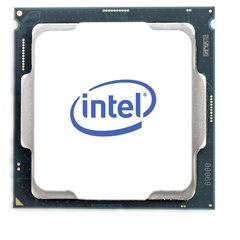Intel Xeon E-2226G @ 3.4GHz, 6C/6T, 12MB, UHD P630, s1151 - BX80684E2226G
Cores: 6 Clock: 3.40 GHz GHz Max. turbo clock: 4.80 GHz GHz L3 Cache: 12 MB MB TDP: 80 W
Interested in purchasing more units? Request an individual B2B offer for these products.
| Product code | 204.161402 |
|---|---|
| Part number | CM8068404174503 |
| EAN | 8592978178345 |
| Alternative Part No. | BX80684E2226G |
| Supermicro Part No. | P4X-UPE2226G-SRF7F |
| Manufacturer | Intel |
| Availability | On demand |
| Warranty | 36 months |
| Weight | 0.02 kg |
 Server system integrator & worldwide shipping
Server system integrator & worldwide shipping Personal approach and tailor-made servers
Personal approach and tailor-made servers NBD warranties & cross-shipping
NBD warranties & cross-shipping Private cloud infrastructure
Private cloud infrastructure Pre-sales & After-sales support
Pre-sales & After-sales support
Detailed information
End of Life product, the price is only informative, we’ve prepared this alternatives for you.
Intel® Xeon® E-2200
Intel® Xeon® E-2200 processors offer sufficient performance and low power consumption. They can find use wherever high core speed is the priority, not the amount. E-2200 processors are appropriate for use in servers for small companies, powerful mobile workstations, storage servers and IoT. All E-2200 series processors come equipped with four to six cores and can reach frequencies up to 4.9GHz.
Cores
The joint activity of processor cores is called multitasking. With multi-core processors, good core cooperation is important because it allows the entire system to be used to its maximum potential. In general, multi-core processors are often used for virtualization or computing, while processors with fewer cores and the highest possible clock rate are often used for single-thread performance-intensive applications.
Threads
The CPU threads are utilized by Hyperthreading and Multi- threading technologies, which create two virtual cores from one physical core by activating two controllers in the core to guarantee higher performance. Most modern server processors have a 1:2 ratio, e.g. 8 cores, 16 threads.
Frequency
The frequency or clock rate of a processor indicates how quickly the processor can process instructions, sort ones and zeros. Performance usually increases as the processor frequency increases, but it is not a rule. Multi-core processors tend to have a lower clock rate, but they still perform better in optimized programs. It is therefore only one aspect of choosing the right processor for a given application.
3.40 GHz
4.70 GHz
Cache
The cache exists in three layers, L1, L2 and L3 , and it is a hardware cache used by the processor to store data and thus making the subsequent data access faster. Processors with higher number of cores often have larger cache. AMD EPYC processors excel in this area, offering up to 256 MB of L3 cache .
Memory Compatibility
When choosing a processor, it is also a good idea to pay attention to the maximum memory capacity that the processor can handle. This parameter is not expandable in the future except by replacing it with a more powerful processor. Next, pay attention to the maximum frequency of the computer memory that the processor can work with — if the frequency of the computer memory is higher than this value, the processor automatically underclocks the memory modules to its maximum supported frequency.
128 GB
2666 MHz
TDP
This value represents the maximum heat output that the server cooling must be able to dissipate. For processors, the heat lost is virtually equal to the energy consumed.
Parameters
| HBM size | 0 |
|---|---|
| Socket | 1151 (H4) |
| Product line | Xeon E |
| Generation | Intel 1.gen |
| Core count | 6 |
| CPU Frequency (GHz) | 3.40 |
| Turbo frequency | 4.80 |
| Cache | 12 |
| TDP (W) | 80 |
| Processor series | TypProc E-2200 |







